Adhemarius daphne
|
|
Updated as per personal communication with Jose Monzon (Guatemala); May 2009
Updated as per personal communication with Andres Oscar Contreras (Neembucu, Paraguay); May 2009
Updated as per personal communication with Larry Valentine (Itanhandu, Minas Gerais, Brazil); March 22, 2010
Updated as per French Guiana Sphingidae; March 9, 2011
Updated as per personal communication with Rodrigo Torres Nunez (111mm, Cundinamarca, Colombia, December 14, 2011); May 22, 2011
Updated as per personal communication with Ben Trott (Playa del Carmen, Quintana Roo, Mexico); February 25, 2012; April 10, 2012
Updated as per personal communication with Linette Mansberger (Bocas del Toro, Bastimentos Island, Panama, September 2012); November 7, 2012
Updated as per personal communication with Brian Fletcher (Abra Patricia Reserve, Amazonas, Peru, October 10, 2009; 2000m); March 21, 2014
Updated as per personal communication with Robert Behrstock (Eldorado Lodge, Santa Marta Mountains, Magdalena, Colombia); June 7, 2014
Updated as per personal communication with Vadim Kroutov (Morona Santiago; Esmeraldas; Ecuador); July 11, 2014
Updated as per personal communication with Sergio D. R�os D�az in CAT�LOGO DE LOS SPHINGIDAE (INSECTA: LEPIDOPTERA) DEPOSITADOS EN
EL MUSEO NACIONAL DE HISTORIA NATURAL DEL PARAGUAY; sent to me in July 2014 by Sergio D. R�os D�az.
Updated as per personal communication with Joanna Rodriguez Ramirez (Tucuman; Argentina), January 22, 2015
Updated as per personal communication with Ezequiel Bustos (Shilap revta. lepid. 43 (172) diciembre, 2015, 615-631 eISSN 2340-4078 ISSN 0300-5267), January 4, 2016
Updated as per personal communication with Carolina Miguel (Paraty, Rio de Janeiro, Brazil, February 18, 2016); February 18, 2016
Updated as per personal communication with Diogo Luiz (Nova Iguacu, Rio de Janeiro, Brazil, December 4, 2016); December 16, 2016
Updated as per personal communication with Ezequiel Bustos (Chaco, Argentina); July 5, 2017
Updated as per personal communication with Jean Haxaire; February 2, 2019
Updated as per personal communication with Cesar Ivan Caballero de la Cruz (Motupe, Lambayeque, Peru, March 18, 2019; May 31, 2019); March 20, 2019; May 31, 2019
Updated as per Hawk-moths (Lepidoptera: Sphingidae) of Trinidad, West Indies: an illustrated and annotated list; Matthew J.W. Cock; March 31, 2022
|
Adhemarius daphne daphne
(Boisduval, [1875])
Amplypterus
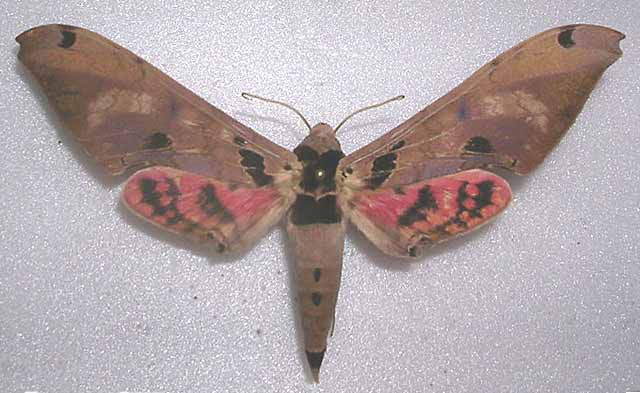
Adhemarius daphne daphne, Brasil, Pot�, Minas Gerais, November 11,
2004,
courtesy of Frederik Goussey.
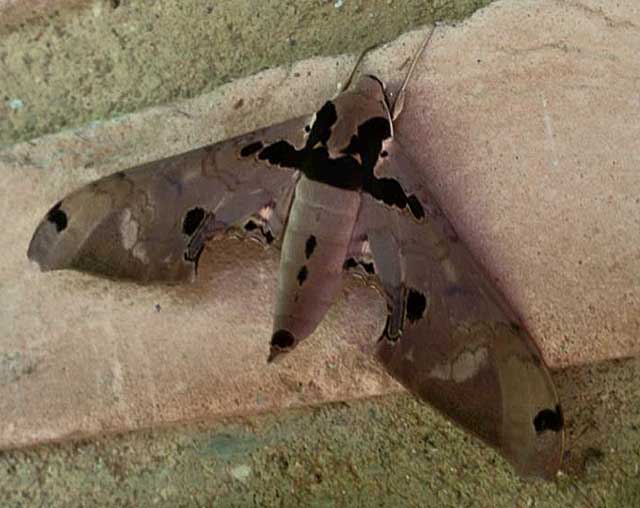
Adhemarius daphne daphne, Paraty, Rio de Janeiro, Brazil,
February 18, 2016, courtesy of Carolina Miguel, id by Bill Oehlke.
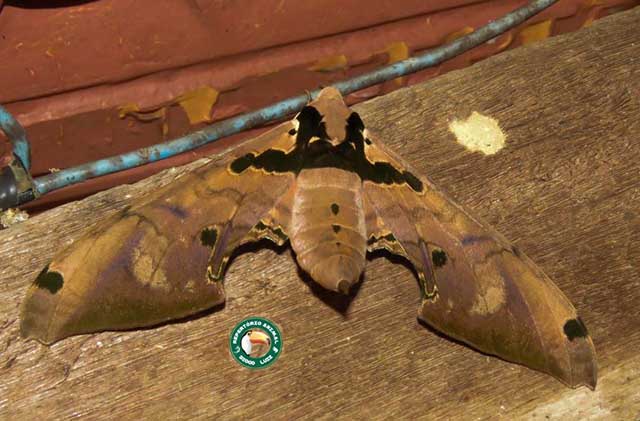
Adhemarius daphne daphne, Nova Iguacu, Rio de Janeiro, Brazil,
December 4, 2016, courtesy of Diogo Luiz, id by Bill Oehlke.
This site has been created by Bill Oehlke.
Comments, suggestions and/or additional information are welcomed by Bill.
| TAXONOMY:
Superfamily: Sphingoidea, Dyar, 1902
Family: Sphingidae, Latreille, 1802
Subfamily: Sphinginae, Latreille, 1802
Tribe: Smerinthini, Grote & Robinson, 1865
Genus: Adhemarius, Oiticica, 1939
Species: daphne, (Boisduval, [1875]) |
DISTRIBUTION:
Adhemarius daphne daphne (approximate wingspan: 104-111-115mm (FW) flies in
Brazil: Minas Gerais; Rio de Janeiro ( probably type location; CM & DL); Roraima; Rio Grande do Sul; Rondonia (FW); and probably
throughout most of Brazil and in
Venezuela;
Trinidad;
Colombia: Cundinamarca; Magdalena (RB)
eastern and western Ecuador: Esmeraldas; Morona Santiago (VK);
Peru: Amazonas; Lambayeque (CICdlC)
French Guiana: Kaw;
Bolivia: Beni;
Argentina Misiones Province (Yacutinga Private Reserve, near border
with Brazil and Paraguay); Tucuman (JRR); (Corrientes, Formosa, Jujuy, Salta,
Chaco, Dpto. Almirante Brown, R�o Muerto, 22-XI-1983, (EB))
Paraguay: Itapua; Neembucu (AOC); Guaira; Canindeyu.

Adhemarius daphne, 115mm, Rancho Grande, Rondonia, Brasil,
August, 1993, courtesy of Anna and Frank West.

Adhemarius daphne, 105mm, Alto Madre de Dios, San Pedro, Cusco, Peru,
November, 2009, 4500ft., courtesy of Anna and Frank West.
Jean Haxaire (2019) has confirmed that Adhemarius daphne interrupta replaces nominate daphne in North and Central America. Subspecies
cubanus is probably valid for the specimens from Cuba. "Host plants: A. daphne interrupta (Closs, 1915) has been reared in Costa Rica on Ocotea
sp., Nectandra sp., Persea sp., Cinnamomum sp., and Licaria sp. (all Lauraceae)."
Jean, 2019, writes, "The limit between the two populations (nominate daphne and daphne interrupta) is unclear. I have collected in North Venezuela,
Carabobo, two males of daphne interrupta. The true daphne daphne is in the amazonian forest, and in all the south of south America."
Jose Monzon reports it as far north as Guatemala: Izabal, and this would now be considered A. daphne interrupta.
CATE, in older reports had it in Mexico: Quintana Roo (BT); Costa Rica, but that would be for
daphne interrupta. which I suspect flies throughout Central America (confirmed in Panama (LM)).
I am pretty sure nominate daphne flies in Guyana;
and has been confirmed in Suriname: Brokopondo District: Brownsberg (JvB).
Those specimens from Costa Rica and Mexico and the rest of Central America would be better classified as A. daphne interrupta,
and those specimens from Cuba as A. daphne cubanus???
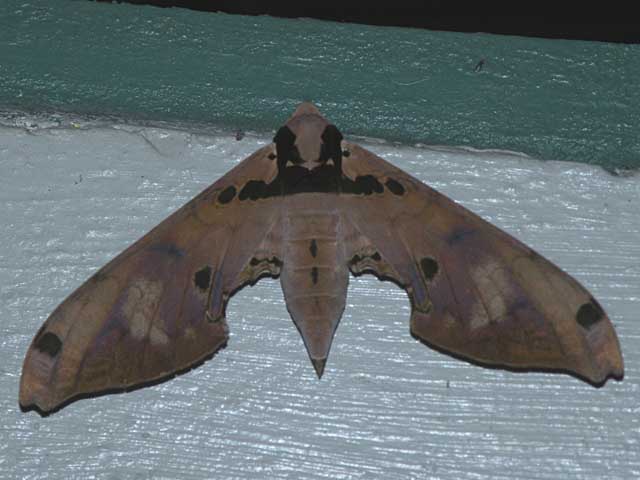
Adhemarius daphne daphne, Brownsberg, National Park, Brokopondo District, Suriname,
July 8, 2011, courtesy of Johan van't Bosch.
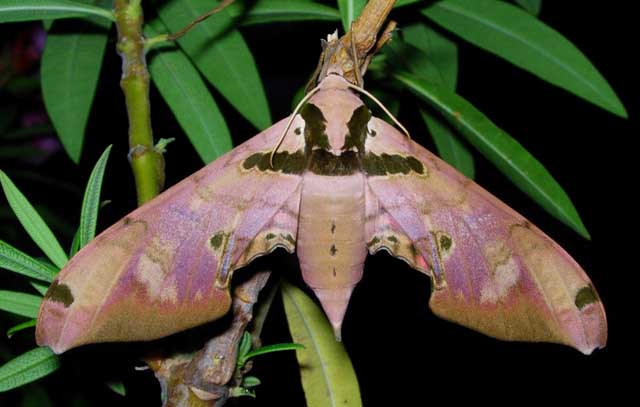
Adhemarius daphne interrupta, Playa del Carmen, Quintana Roo, Mexico, courtesy of Ben Trott.
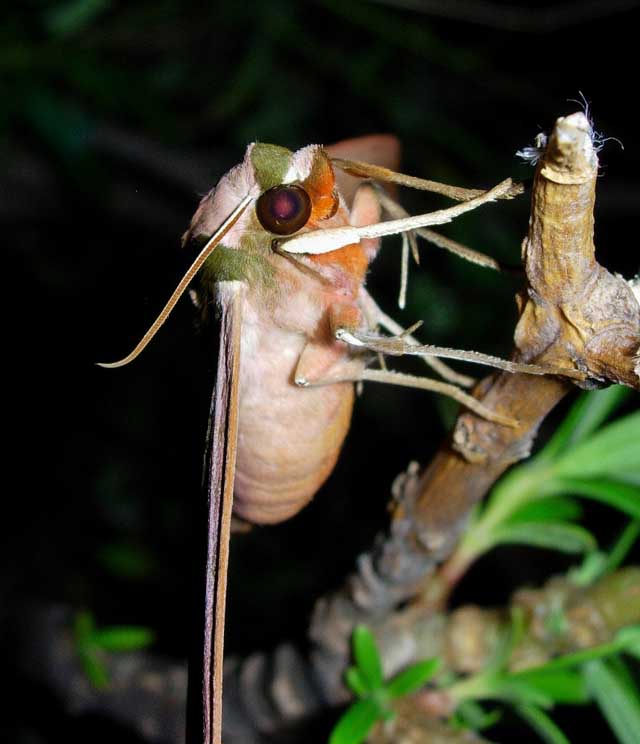
Adhemarius daphne interrupta, Playa del Carmen, Quintana Roo, Mexico, courtesy of Ben Trott.
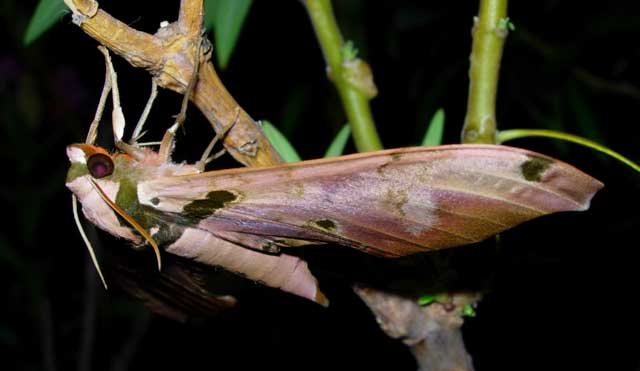
Adhemarius daphne interrupta, Playa del Carmen, Quintana Roo, Mexico, courtesy of Ben Trott.
Ben Trott confirms the presence in Mexico (this would be subspecies interrupta) with images from Playa del Carmen, Quintana Roo. Previously those
specimens in Mexico had been associated with Adhemarius gannascus. In A. daphne the dark basal patch does not extend onto the
costa as it does in A. gannascus.
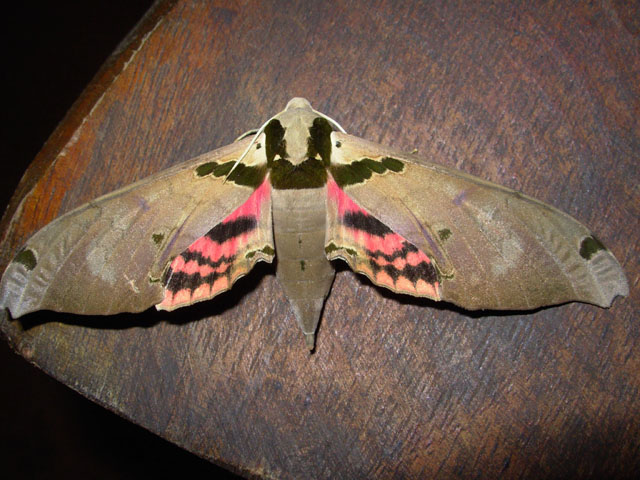
Adhemarius daphne daphne, Yacutinga Private Reserve, Misiones Province,
(near border between Argentina, Paraguay and Brazil), September 2007,
courtesy of Ezequiel Osvaldo N��ez Bustos.
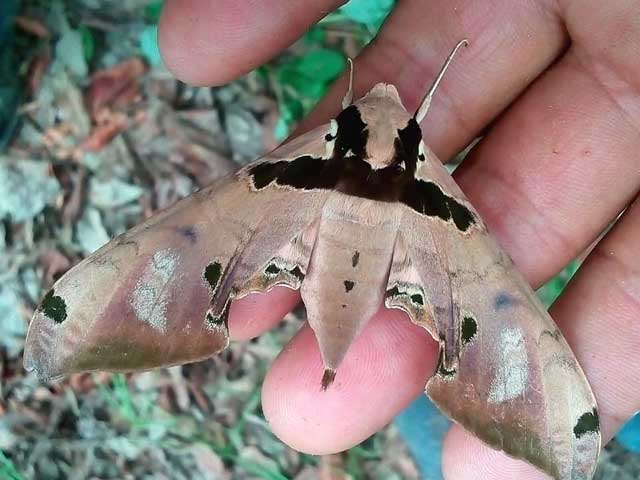
Adhemarius daphne daphne, Motupe, Lambayeque, Peru,
March 18, 2019, courtesy of Cesar Ivan Caballero de la Cruz.
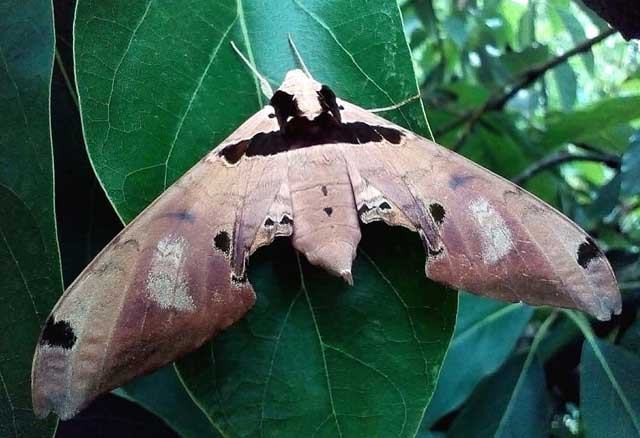
Adhemarius daphne daphne, Motupe, Lambayeque, Peru,
March 18, 2019, courtesy of Cesar Ivan Caballero de la Cruz.
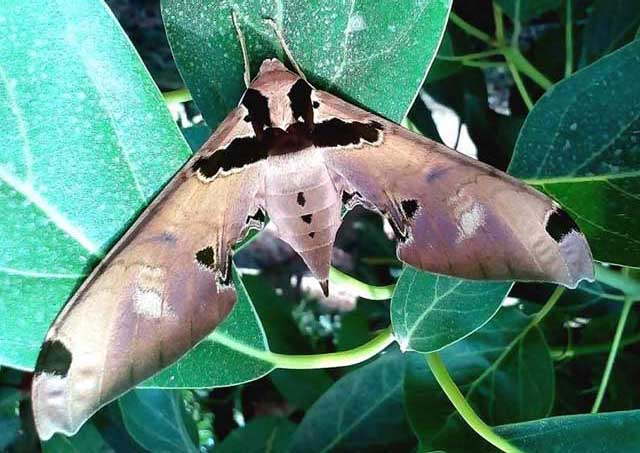
Adhemarius daphne daphne, Motupe, Lambayeque, Peru,
different specimen and date, courtesy of Cesar Ivan Caballero de la Cruz.
"This species is frequently confused with A. gannascus. However, the two species are easily separated by the shape of the
subapical mark on the forewing costa (Haxaire, 1986). In A. gannascus, this mark is a narrow, comma-shaped lunule,
whereas in A. daphne, it is much broader. Haxaire & Herbin (2000) recorded this species from Yocumo [Yacuma] (350m), Department of Beni."
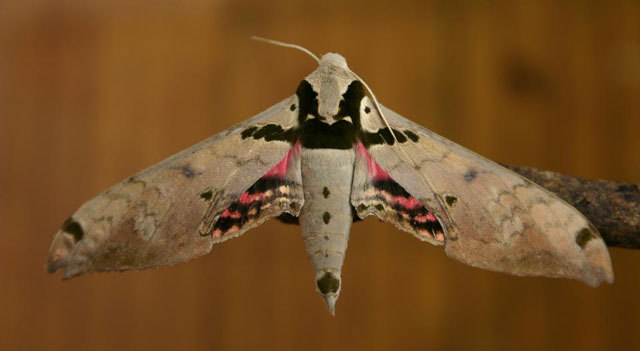
Adhemarius daphne daphne, Itapua, Paraguay, courtesy of Regis Nossent/Fauna Paraguay.
The antemedial line does not extend into the costa in A. daphne.
In Kitching and Cadiou 2000, A. daphne is treated as a synonym of A. gannascus. I believe Jean Haxaire has recently elevated it to full species
status. The moth to the right from Puerto Iguazu, Misiones Province, Argentina, courtesy of Oz Rittner, has been confirmed by Jean Haxaire as A. daphne daphne.
| 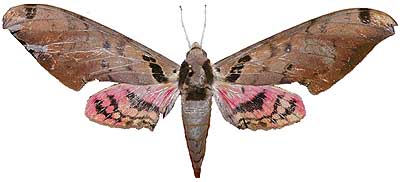 |
FLIGHT TIMES AND PREFERRED FOOD PLANTS:
Adhemarius daphne probably produces at least two broods annually.
In Brazil it has been recorded in March and November. Rodrigo Torres Nunez reports a December 14, 2010, flight in
Cundinamarca, Colombia. Johan van't Bosch reports a July flight in Suriname. Brian Flethcher reports an October flight in Amazonas, Peru.
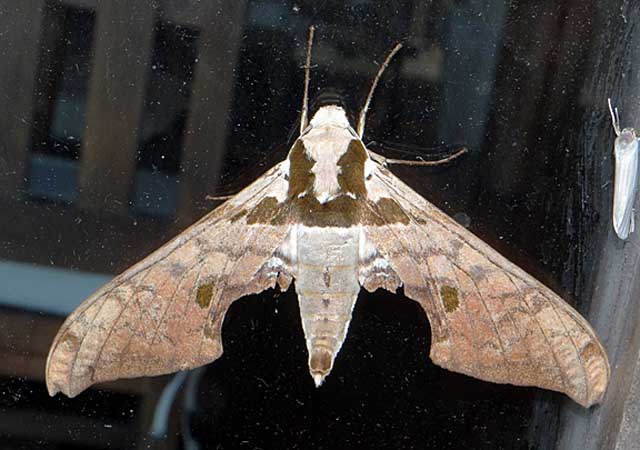
Adhemarius daphne daphne, Eldorado, Santa Marta Mountains, Magdalena, Colombia,
courtesy of Robert Behrstock, tentative id by Bill Oehlke.
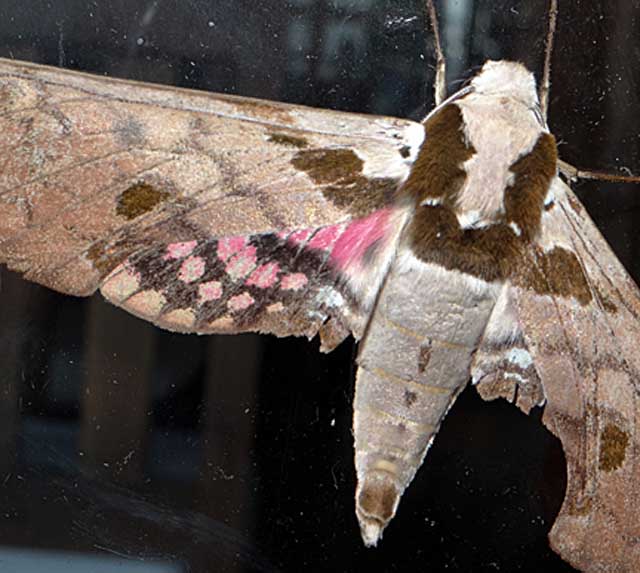
Adhemarius daphne daphne, Eldorado, Santa Marta Mountains, Magdalena, Colombia,
courtesy of Robert Behrstock, tentative id by Bill Oehlke.
Adhemarius daphne daphne larval hosts are unknown to me.
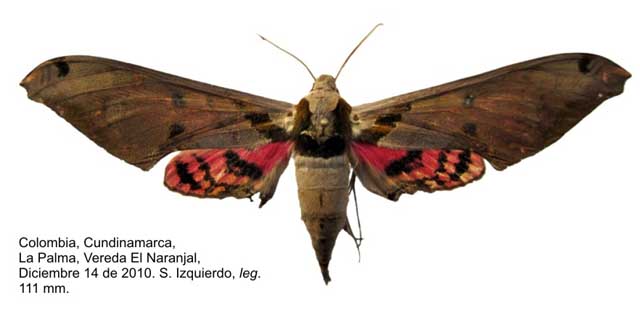
Adhemarius daphne daphne, Cundinamarca, Colombia,
111mm, December 14, 2010, courtesy of Rodrigo Torres Nunez.
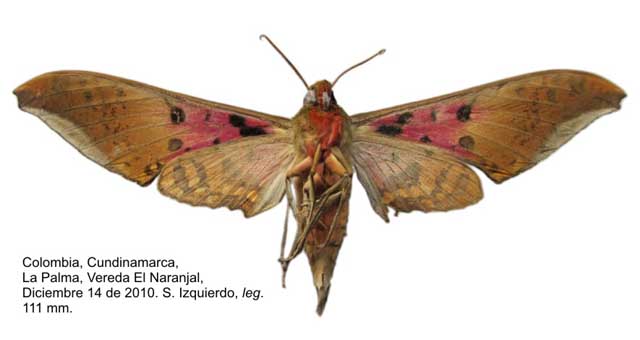
Adhemarius daphne daphne (verso), Cundinamarca, Colombia,
111mm, December 14, 2010, courtesy of Rodrigo Torres Nunez.
ECLOSION, SCENTING AND MATING:
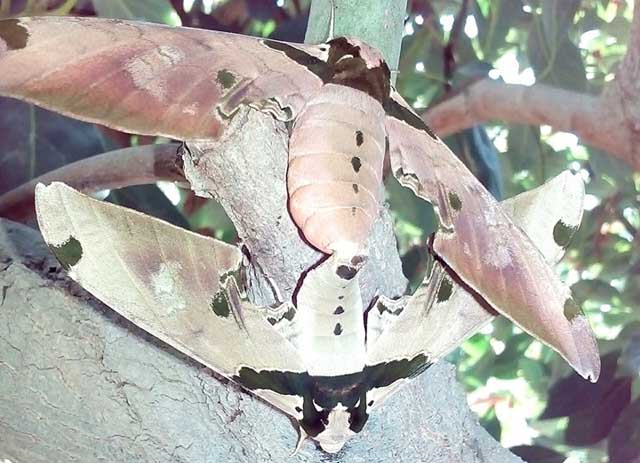
Adhemarius daphne daphne in copula, Motupe, Lambayeque, Peru,
May 31, 2019 courtesy of Cesar Ivan Caballero de la Cruz.
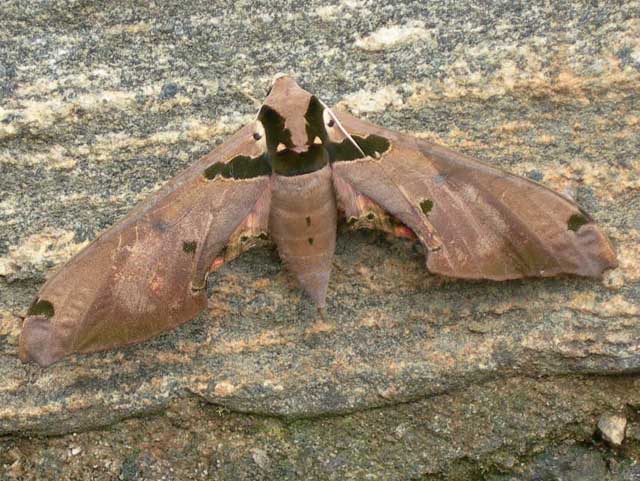
Adhemarius daphne daphne, Itanhandu, Minas Gerais, Brazil,
March 22, 2010, courtesy of Larry Valentine.
Visit additional Adhemarius daphne daphne images,
Itanhandu, Minas Gerais, Brazil, March 22, 2010, courtesy of Larry Valentine.
Visit additional Adhemarius daphne daphne images,
Esmeraldas and Morona Santiago, Ecuador, courtesy of Vadim Kroutov.
EGGS, LARVAE AND PUPAE:
Ben Trott sends the Adhemarius daphne interrupta larval images from Quintana Roo, Mexico. He writes, "Found on a shrub belonging to the Lauraceae family, very well
camouflaged with its blue green morph and spots." The images were originally thought to be A. gannascus, but the emergence of the subsequent adult revealed
them as Adhemarius daphne larval images. The adult from the larva is posted above.
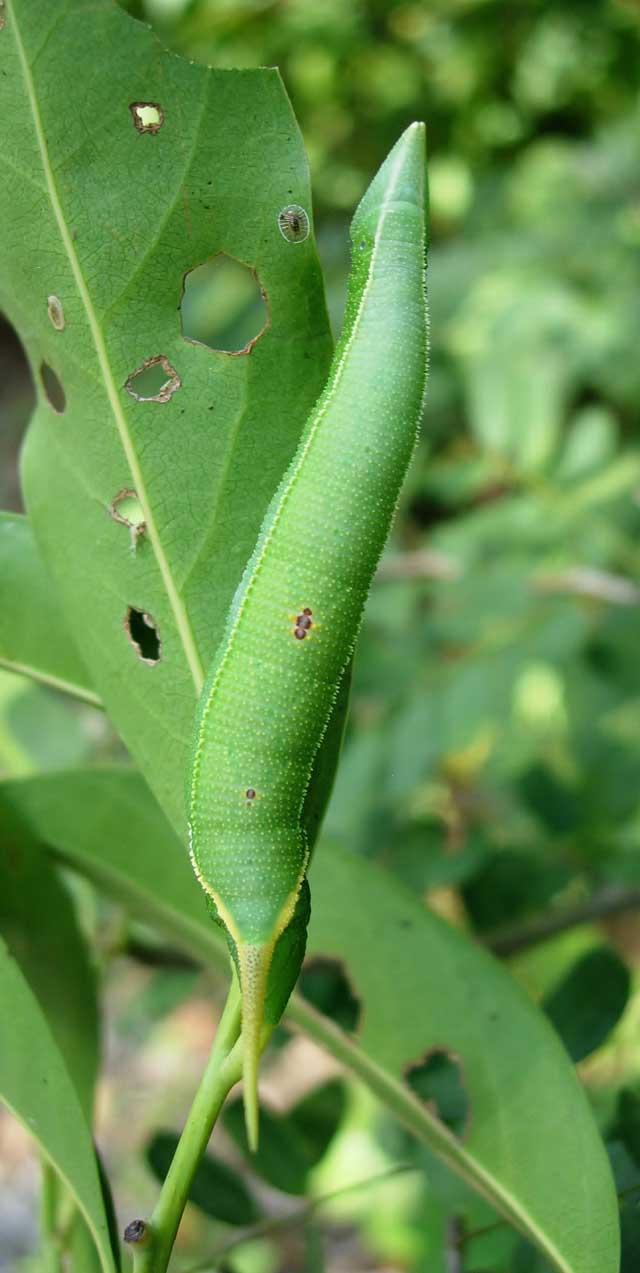
Adhemarius daphne interrupta? fifth instar, Playa del Carmen, Quintana Roo, Mexico,
courtesy of Ben Trott.
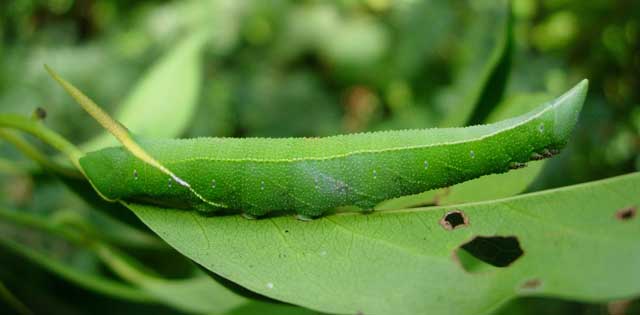
Adhemarius daphne interrupta? fifth instar, Playa del Carmen, Quintana Roo, Mexico,
courtesy of Ben Trott.
Larval Food Plants
Listed below are primary food plant(s) and alternate food plants. It is hoped that this alphabetical listing followed by the common name of the foodplant will
prove useful. The list is not exhaustive. Experimenting with closely related foodplants is worthwhile.
Lauraceae (BT) .......
|
Lauraceae
|
Return to Smerinthini Tribe
Return to Main Sphingidae Index
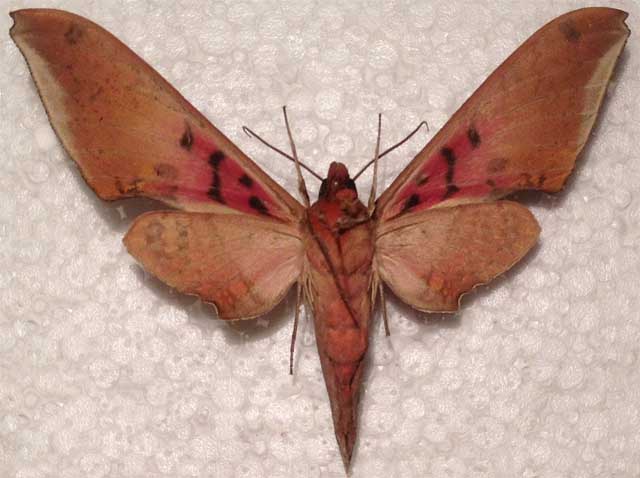
Adhemarius daphne daphne verso, courtesy of
Vadim Kroutov.
Use your browser "Back" button to return to the previous page.
This page is brought to you by Bill Oehlke and the
WLSS. Pages are on space rented from Bizland. If you would like
to become a "Patron of the Sphingidae Site", contact Bill.
Please send sightings/images to Bill. I will do my best to respond to requests for identification help.
Enjoy one of nature's wonderments: Live Saturniidae (Giant Silkmoth) cocoons.
 | 
Show appreciation for this site by clicking on flashing butterfly to the left.
The link will take you to a page with links to many insect sites. |
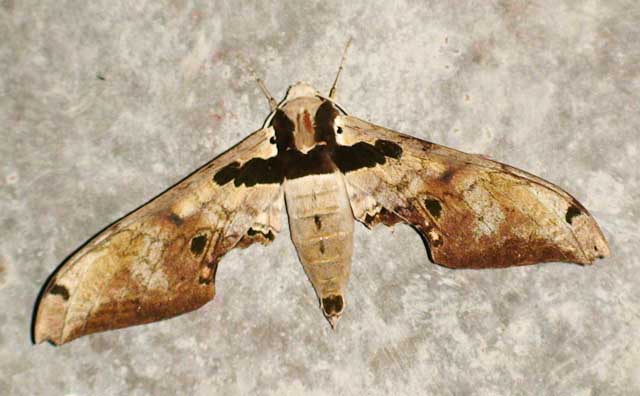
Adhemarius daphne daphne, Abra Patricia Reserve, Amazonas, Peru,
October 10, 2009; 2000m, courtesy of Brian Fletcher.


























